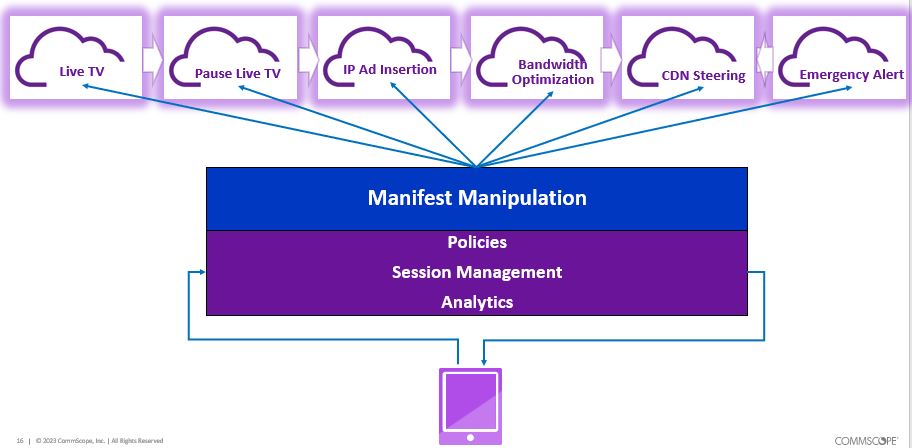We’ve all been there: You’ve fixed a snack, settled down on the couch, and are getting ready to catch up on a few episodes of your favorite TV series or a new movie title offered by your Internet video streaming service, when all of a sudden – there’s a disruption in watching the content.
When Netflix went dark, it left customers twiddling their thumbs for more than an hour and a half this past July. This past December, YouTube experienced a service disruption that impacted more than 15,000 users, resulting in users either fully losing access to its platform or facing slow service. More recently, the premiere of the highly anticipated show “House of the Dragon” overwhelmed the HBO Max service, leaving thousands of viewers unable to tune in.
To be clear, these disruptions are not due to any shortcoming of the over-the-top (OTT) video providers themselves; these disruptions are caused by limitations of the technology used by OTT video services as they scale. And while a temporary outage isn’t the end of the world, it is a subpar user experience (UX) for customers.
Given the continued growth of IP video, the question naturally raises itself: Is there a way to circumvent the limitations of the technology currently being used to deliver content, to help eliminate disruptions?
This question takes on an added sense of urgency when you consider that OTT providers like the Amazons and Apples of the world are getting into the business of live sports broadcasting – and nobody wants a service disruption in the 9th inning of a baseball game, when the bases are loaded, and the star player is at bat.
It is helpful here to take a closer look at current content delivery models and use cases to see where they succeed, where they fall short, and where there are exciting new possibilities and opportunities.
What Has VOD Done?
For the most part, the way content delivery currently works in the OTT model is that delivery of video on-demand (VOD) content is assisted by caching servers that provide content storage and delivery closer to the end users.
Recently, there has been a move towards a new form of content delivery collaboration for VOD content: open caching, like that provided by Netflix Open Connect and Google Global Cache. In this model, there’s an open cache arrangement between Internet service providers (ISP) and content providers; it is a commercial relationship that prepositions on-demand content in the ISP network – and it is gaining traction.
Look no further than the agreement that was recently inked by Verizon (the service provider in this equation) and Disney (the content provider in this equation). Under the terms of this deal, Disney will be able to take advantage of Verizon’s edge caching capabilities, storing the most requested streaming video content in network facilities closer to the customer. The net result? Content starts faster, while also reducing freezing, pausing, or playback failures during streaming.
For Live TV, Think Multicast
That addresses some of the network challenges of the VOD use case. But what about Live TV, like the sports use case we touched on earlier? As some skeptics have noted, the OTT providers will have a tough time scaling current unicast IP video technology to produce high-quality broadcasts and flawlessly stream games for millions of concurrent viewers.
Again, there are examples here where inherent limits in the technology make delivering content to the end user a difficult task. Global OTT sports streaming provider DAZN experienced technical difficulties during streaming coverage of key football matches. Likewise, Starhub’s OTT streaming service experienced disruptions during its streaming of Premier League matches, even while it’s multicast IPTV service did not.
The bottom line? The OTT streaming challenges that have been seen in the VOD space are starting to be seen for Live TV streaming. Fortunately, this is where a technology like multicast advanced bitrate (MABR) streaming comes in as a way to offset potential content delivery problems.
MABR has primarily been considered a solution for traditional Pay TV network operators for video streaming of TV programming content that they license and manage. But MABR has an equally significant opportunity to assist ISPs in handling the peak viewership Live TV network traffic demands presented by OTT video streaming. We’re talking here about Live TV programming content that ISPs don’t license and manage, but still to need deal with in supporting their broadband network subscribers.
This is where MABR as a solution for ISP broadband services comes into play. MABR enables a content delivery solution for ABR video streaming to all Live TV subscriber devices in the home, leveraging the bandwidth efficiencies and video quality of IP multicast. Essentially, it’s a network optimization tool for multicasting HTTP (web-based) video content that reintroduces bandwidth savings that might be lost in the migration from multicast network technologies that have been used for Pay TV services.
In this way, multicast dramatically reduces bandwidth required for Linear/Live TV compared to unicast. Simply put, multicast is more efficient.
Crucially, MABR’s dynamic caching of Linear/Live TV goes all the way out to the consumer household and therefore addresses the ISP “last mile” network compared to pre-positioned VOD content (such as an entire TV show episode) being cached at the ISP network edge (which then connects to the subscriber access network). This makes MABR’s dynamic caching of small amounts of video content at a time in the home, continuously delivered and viewed by subscribers, ideal for Live TV vs VOD content farther back up in the ISP network data center.
Start Partnering Up
What does all this mean? In the same way that content providers and service providers have partnered in the VOD space to minimize content delivery disruptions and improve the overall UX, ISPs should consider establishing commercial relationships with streaming services for live content delivery over their broadband services, utilizing MABR as the most efficient delivery mechanism.
If sports are going to make the migration from broadcast/cable TV to OTT streaming services, UX will be critical. In using MABR, internet service providers can ensure that customers benefit from a more foundationally solid form of video distribution.
The last thing that content providers, including sports leagues, and their Live TV/Pay TV content distribution partners want to do is offer a bad TV experience. As Linear/Live TV migrates to OTT streaming services, MABR ensures that they won’t. ISPs that leverage this technology can help content providers head off the technological limitations around the traditional delivery of OTT on-demand content and allow OTT services to move into a new phase of content delivery with confidence.
ISPs can take charge of their future by learning more about how multicast ABR solutions offered by CommScope can help them optimize IP Video Streaming to the home.














